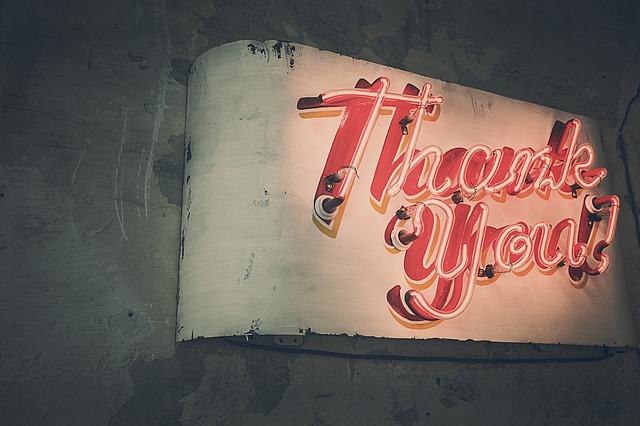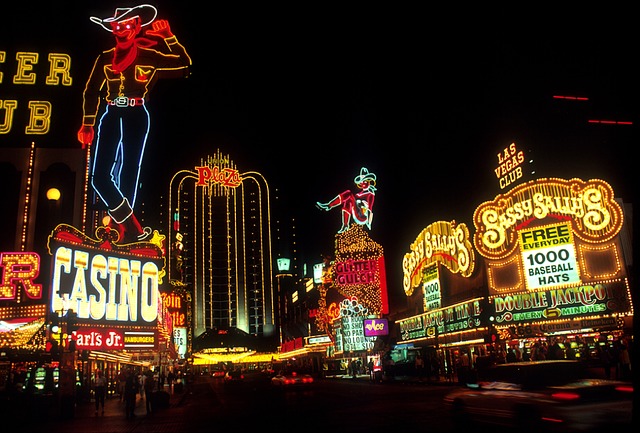It is impossible to talk about the history of Las Vegas without mentioning the city’s famous neon signs. These elaborate and eye-catching signs were works of art that help put the city on the map. When neon lights first became popular, they were a symbol of a new and modern age and there was nothing quite as modern as a city rising out of the desert and offering glitz, glamour, freedom and a whole new level of entertainment. That is why we are going to take a closer look at the history of neon signs, how they helped shaped Las Vegas and what role they play now.
The Discovery of Neon

The Scottish chemist, Sir William Ramsay, is credited with discovering neon, xenon, argon, krypton and isolating helium and radon during the 1890s. These six gases are known as the noble gases because they don’t like to bond with other atoms. Ramsay was determined to discover the rare gases that are a part of air and was able to successfully identify new gases. During his experiments, he took these invisible gases, placed them in sealed gas tubes and charged them with electricity. The result was a colorful spectrum of light that glowed in ways that had never been seen. Ramsay went on to win the Nobel Prize for his efforts and discoveries.
Over the next decade, scientists around the world toiled away trying to create an efficient and practical way to light homes and businesses. Thomas Edison’s incandescent bulbs were promising, but they didn’t last long enough. Daniel McFarlan Moore thought that gas tubes Ramsay has experimented with were the answer and opened his own lighting company. His products were more efficient than the current bulbs, but they were still prohibitively expensive and prone to leaks. In 1910, tungsten filaments were placed in bulbs, making them more efficient than ever and basically eliminating any interest in tube lamps.
However, that didn’t stop the engineer Georges Claude, from continuing to experiment with electrifying tubes filled with nobles gases. Eventually, he was able to create 20 foot tubes that would safely operate for up to 1,200 hours. Claude recognized that neon light wasn’t ideal for lighting homes, but he clearly saw the potential for neon to transform advertising. In 1912, the first neon sign was installed outside a barbershop in Paris to attract customers. It worked like a charm and neon had begun its ascent.
Neon Lights Come to the States
While neon lights are practically synonymous with Las Vegas, Los Angeles was actually the first city to be illuminated by these new lights in the 1920s. At that time, Las Vegas was still just a blip in the desert, but LA was a thriving city being fueled by modern businesses selling new technology. The first neon signs in the US were installed outside California’s first Packard dealership. The signs were an instant hit and even caused traffic jams as drivers stopped to marvel at the glowing lights.
From there, neon signs spread like wildfire. Businesses of all kinds started investing in the signs and trade schools opened so that craftsman could learn the skill of making elaborate glass tubes. Creating signs became a true art form and innovators were constantly pushing the limits of design. Over time, designers were able to achieve over 40 color combinations by playing with the gas mixture and tinting the tubes. Eventually, neon signs included moving parts for even more spectacular displays of art and engineering.
Las Vegas Embraces Neon

Neon signs had proven that they could draw in people, so when Las Vegas was looking for a way to get people to the city, neon signs seemed like the perfect solution. One of the city’s first neon signs was installed at Fremont East’s Boulder Club in 1936. As the city continued to grow and showcase experimental architecture that simply wasn’t being practiced anywhere else in the world, neon signs became their own form of decoration. They weren’t just signs, but essential parts of some of Las Vegas’s most iconic buildings, including Lady Luck, The Mint and the Golden Nugget.
Over the next few decades, competition drove casinos to build more luxurious buildings and cover them in even more creative and jaw-dropping neon signs. The neon lights served as great advertising tools and they helped to light up the streets of Las Vegas and gamblers continued well into the morning hours. The 1960s were the heyday of neon signs in Vegas and the city was practically a shrine to neon. It was home to five of the world’s tallest electric signs. By the late 60s, plastic signs were all the rage because they offered a cheaper alternative and the city was looking for new and creative ways to market itself. New developers looked at neon as a sign of the past and they were looking towards the future and more modern design aesthetics.
Preserving Vegas’s Neon History
While elaborate neon signs may no longer define the strip, these lights have played an important role in the history of the city. That is why many are working to preserve and repair iconic neon signs and put them on display for the public. In 1996, the Neon Museum was founded and it now hosts hundreds of thousands of visitors every year. The collection showcases design trends and technological advances through time and allows visitors to experience famous signs. In fact, the visitor center is actually a restored version of the lobby from the La Concha Motel. From there, visitors can wander the 2.62 acres of outdoor displays or register for a guided tour. It is the perfect place to learn about the history of Las Vegas and get up close to some truly impressive signs that helped to shape the city.
Today, Las Vegas continues to push the limits of design and technology. It is truly an innovation hub where big dreams are turned into reality in order to attract and impress customers. The best in everything from architecture, software and design are on full display in the city. Casino Schedule Ease is happy to be a part of the city by providing casinos with the latest in scheduling software that simplifies even the most complex scheduling needs that involve a constant cycle of hundreds of employees.

